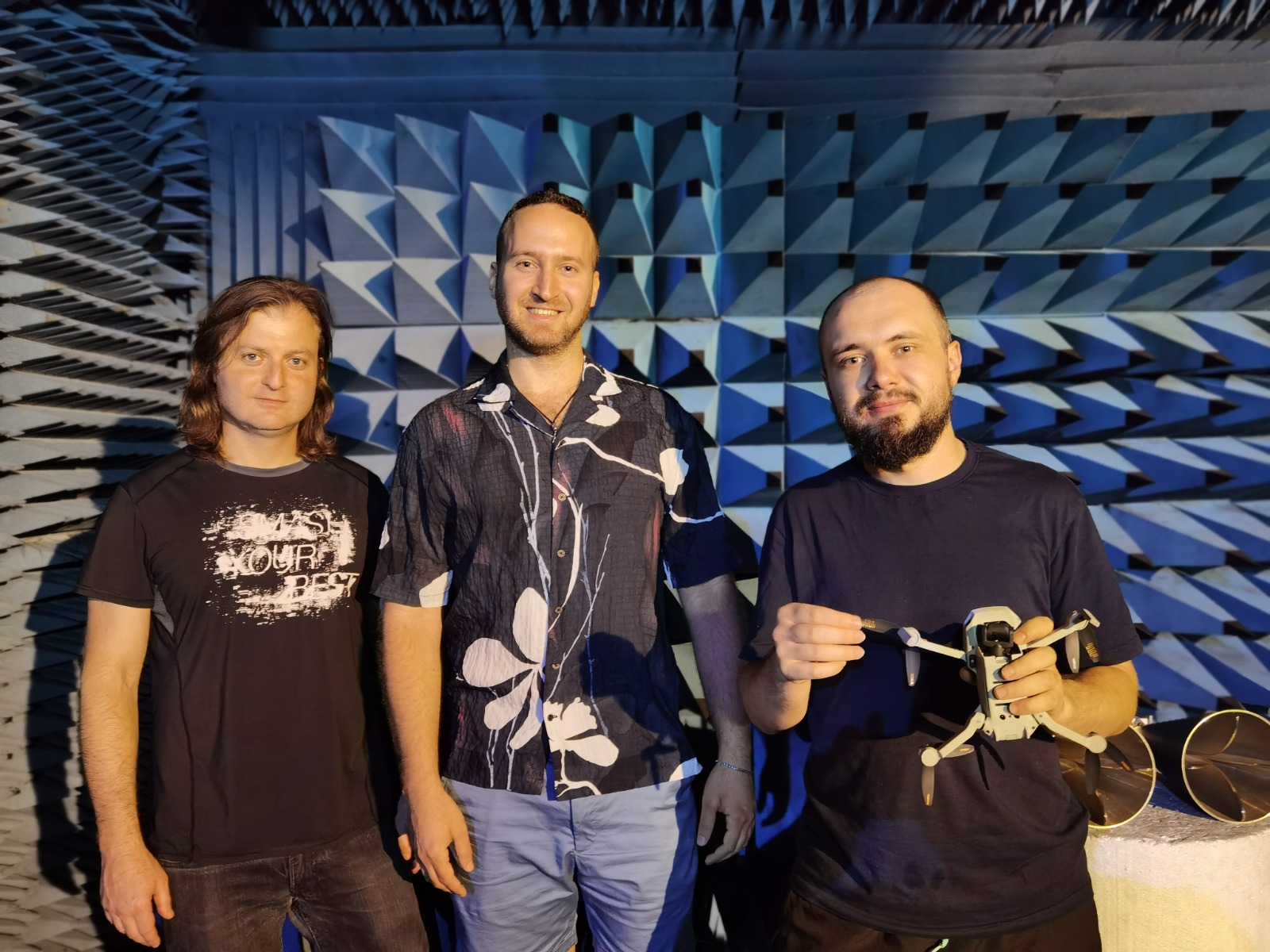
The research team (Left to Right): Prof. Pavel Ginzburg, Omer Tzidki & Dmytro Vovchuk. Photo credit: Anton Kharchevskii
TAU: New Tech Development Can Now Identify & Track Drones
New Technological Development at Tel Aviv University’s
Faculty of Engineering
Smart tagging technology can identify and track drones even in extreme conditions
A new development by researchers at the Faculty of Engineering at Tel Aviv University will help identify small drones in challenging scenarios, such as urban environments, low flight altitudes, and extreme weather conditions, enhancing the protection of airspaces via smart tagging. The research team notes that drone identification is generally conducted using radars, cameras, and transponders, with the latter providing real-time updates on location in civilian contexts. However, these methods can fail in harsh conditions, including limited line of sight, multiple air traffic participants, and tall buildings blocking satellite signals, among other challenges.
The researchers highlight that this new technology can overcome these challenges and provide a superior level of reliability by using smart stickers and a radar supported by an AI algorithm that classifies drones based on the electromagnetic radiation they scatter.
The development was led by Ph.D. students Omer Tzidki and Dmytro Vovchuk from Prof. Pavel Ginzburg’s lab, the Iby and Aladar Fleischman Faculty of Engineering. The lab specializes in developing novel radar and wireless communication technologies, facing new and forthcoming challenges.
Omer Tzidki points out that the problem of identifying the drones is especially critical when there is no direct line of sight, for example when the drone is hidden behind a cloud, in fog, or hard to see due to adverse weather conditions. In these situations, cameras alone are insufficient, and the use of radar becomes necessary.
With this new development, identification is carried out through an electromagnetic representation of the drone’s “identity card.” This allows the radar to distinguish between drones with different IDs by using electromagnetic tagging on the drone’s wings. The AI algorithm, which relies on a neural network, classifies the drone as either friendly or hostile and operates successfully even in varying harsh conditions while minimizing the risk of accidents. Initial experiments were conducted under laboratory conditions in a sterile environment, followed by trials in an external setting to simulate real-world scenarios.
Prof. Pavel Ginzburg: “The simplest things often work best. This project leverages fundamental physical principles to reliably and accurately classify drones. The process of identifying any drone using radar is quite complex, so achieving the capability to identify specific drones is a significant accomplishment of which we are very proud.”
Omer Tzidki emphasizes that the combination of electromagnetic techniques, AI algorithms, and innovative radar technology yields optimal results. “Mapping the airfield is critical for protecting the lives of soldiers and civilians. This project is important at all times, and especially crucial now,” he said.
The research team (Left to Right): Prof. Pavel Ginzburg, Omer Tzidki & Dmytro Vovchuk.
Photo credit: Anton Kharchevskii







